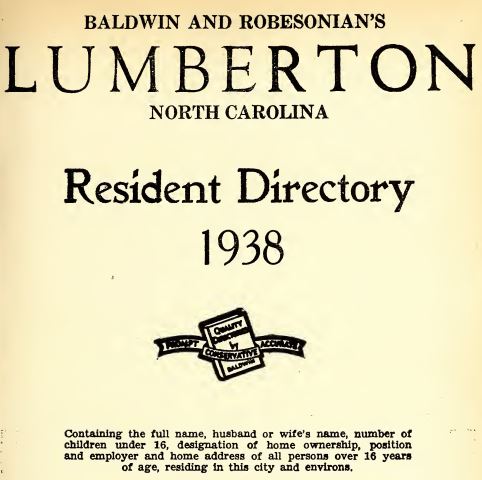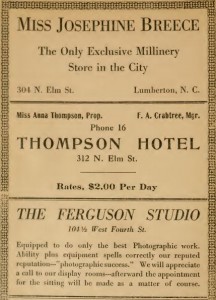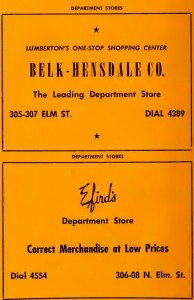“A Desirable Place for Good Citizens to Live” – A Look at Lumberton’s City Directories
Our colleagues over at the State Library of North Carolina are highlighting a North Carolina county every week, and in honor of this week’s county, Robeson, we are taking a closer look at the city directories from Robeson’s county seat, Lumberton.
In DigitalNC, we have four city directories from Lumberton, that span the time period of 1916-1956. The directories highlight the changes and growth in Lumberton over this time as it moved from a town of approximately 3,000 residents to one of 18,119 people by 1956. City directories, which were printed by private companies, provided many of the services that a telephone book did later in the 20th century, but they tended to include more elaborate information about the residents in the town, had extensive advertisements, and often added civic information. The Lumberton city directories were no exception.
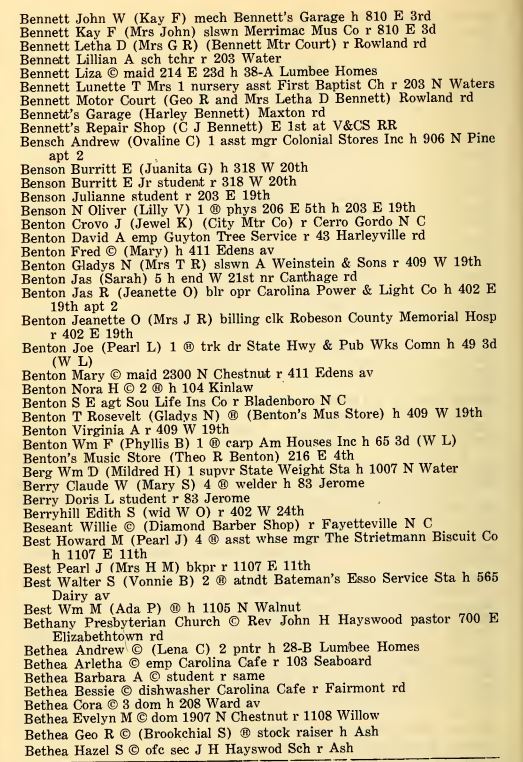
Example of directory information on residents. Directory is courtesy of the North Carolina Collection, UNC-Chapel Hill.
The directories for Lumberton in DigitalNC were published by three different publishers, all based out of South Carolina; Gardiner, Baldwin, and Nelson. These publishers took it upon themselves to do a census of all the residents and businesses in town. The information gathered on the residents not only included their address, but how many people lived in the house and their occupations. Information such as race and whether or not the house was owned by the resident was also included.
Extensive civic information is also included in several of the directories, particularly those produced by Baldwin. Not only is a town history provided, with images of the hospital and schools in the town, but also a complete listing of who was in office at the time, both in the North Carolina government and every single member of Congress, and the Supreme Court.
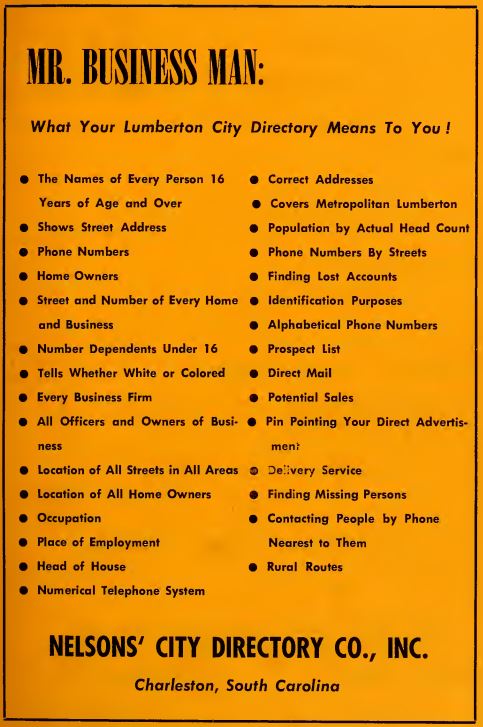
Encouraging business owners to advertise in the directory, as this was the publisher’s source of revenue. Courtesy of the North Carolina Collection, UNC-Chapel Hill
As the city directories were handed out free to those in the town, revenue for the directories came from advertisements, which are a rich source of information about the types of businesses in the town and the types of products they were selling. You can see over time how there was a shift from locally owned small shops to more franchise based operations. For example, in 1916 a local millinery shop is advertised and in the 1956 directory, several regional and national department stores are advertising.
The Lumberton city directories provide a microscope on the town in the early half of the twentieth century and are a rich resource for anyone wanting to learn more about what the 1916 directory advertises as “A Desirable Place for Good Citizens to Live.”
For more information on the history of city directories and their use as a research tool in the 21st century, the New York Public Library has an excellent blog post here. For more city directories from towns and cities across North Carolina, check out DigitalNC’s City Directories Collection.
